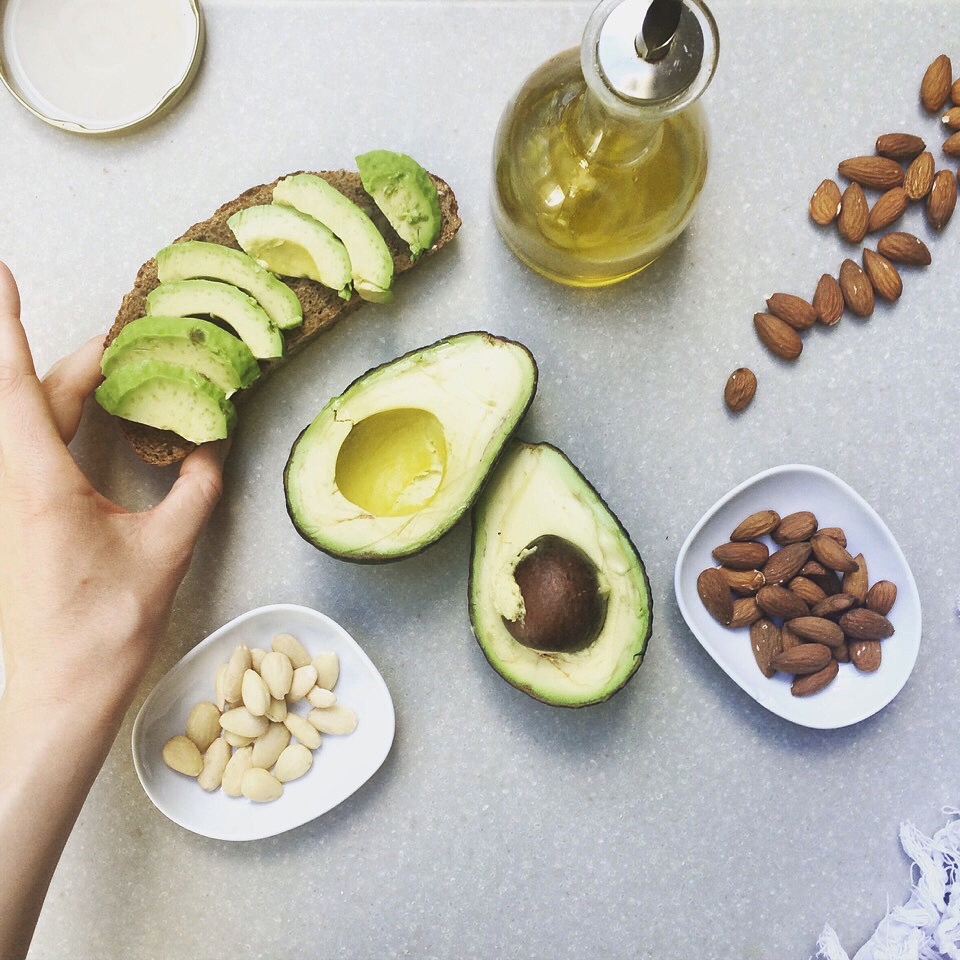
Nuts contain good amounts of protein, fibre and healthy fats and importantly NO SUGAR!
The high levels of protein in nuts help our body grow, heal and recover from the usual wear and tear as well as after exercise or illness.
Nuts are also high in fibre which helps keep our blood sugar levels steady and increase satiety, which makes them a great in-between meals snack to keep sugar and caffeine cravings away. Additionally, fibre in nuts is mostly soluble fibre that helps maintain intestinal transit and aids toxin elimination, reduces cholesterol levels and therefore helps maintain a healthy cardiovascular system. Nuts also contain some insoluble fibre which helps maintain healthy intestinal flora. We talked about the importance of maintaining a balanced gut in our blog last week.
Note however that nuts contain a high fat percentage which provides twice as many calories per gram as carbohydrates or proteins, so if you try to maintain your weight remember that a handful of nuts provides a 170Kcal. That’s twice as many as a medium apple but nuts will keep you fuller for longer because of their protein and fat content.
The FAT in NUTS….
• Nuts in general have a low levels of saturated fat which has been linked to cardiovascular disease.
• Some nuts have good levels of monounsaturated fats (as do olive oil and avocadoes) that help keep our arteries and heart healthy.
• Some nuts such as walnuts are quite high in polyunsaturated fats, mostly the essential omega-6 type that although necessary for growth and development and for maintaining brain function also can have a pro-inflammatory effect. Modern diets, rich in meat and animal products, processed foods and vegetable oils, can be too high in omega 6 versus the anti-inflammatory omega-fats find in oily fish, chia and flax seeds.
ARE ALL NUTS THE SAME, NUTRITIONALLY SPEAKING?
No, there are notable differences between nuts from the nutritional point of view.
CALORIES:
Almonds and pistachios contain fewer calories and more protein than walnuts, cashews and hazelnuts. Almonds contain high levels of vitamin E that has antioxidant properties, calcium which helps to maintain strong bones and magnesium that contributes to optimal muscle function. Pistachios also provide good levels of potassium which helps regulate blood pressure.
FATS:
A handful of almonds, for example, contains about 14g of fat, of which only 1 g is saturated fat, 10g is monosaturated fats (the same type as olive oil or avocado) and the rest is omega-6, which although necessary, in large amounts can promote inflammation.
Walnuts contain fairly high levels of polyunsaturated fats, particularly omega-6, and fairly low amounts of monounsaturated fats. They also provide folic acid which plays an important role in the production of red blood cells, phosphorus which is needed to maintain bone structure and vitamin B6 that helps with protein metabolism.
Macadamia nuts, despite being high in calories due to their high fat content, provide generous amounts of heart-friendly mono-unsaturated fats and mot much saturated and polyunsaturated fats.
PROTEIN:
Almonds, pistachios and cashews contain between 5 and 6 grams of protein in every handful about the same amount as a 150g pot of plain yogurt. Macadamia and pecan nuts contain lower protein and higher fat levels.
CAN THE PHYTIC ACID IN NUTS REDUCE NUTRIENT ABSORPTION?
Nuts contain phytic acid which binds to minerals such as calcium, zinc and magnesium preventing their absorption in the gut. Other foods high in phytic acid are legumes, whole grains and seeds. Diets too high in these foods can lead to deficiency of some essential minerals. But not everything is negative, phytic acid can act as an antioxidant and help regulate sugar levels in the blood.
What can we do to minimize the effects of phytic acid in the absorption of nutrients?
We can soak nuts for about 6 hours or overnight. Drain well and dry them in the oven at very low temperature (50C) for about 30 minutes. We can add some spices such as chili, cumin, cinnamon, etc to enhance their flavour. As for beans and pulses , you should always make them soak 8 hours before cooking them until nice and soft.
You can also eat nuts as snacks instead of as part of a meal to avoid interfering with the absorption of nutrients such as iron in red meat or zinc in shellfish. Or if you do eat them in salads, soups and other dishes, avoid mixing them with foods high in iron, zinc, magnesium (whole grains, broccoli, avocado) or calcium (dairy products) to avoid reduced absorption.
Summing up….nuts, yes please, but in moderation and choosing the right ones for you!
Nuts are a great snack and a good source of protein. But because they are high in phytic acid and high in calories I recommended eating them in moderation. Almonds are my favourite nuts because they are high in calcium, vitamin E and heart-friendly monounsaturated fats like macadamia nuts but with considerably less calories. I also love that you can enjoy your almonds as milk in your coffee (almonds have been put to soak and thus contains less phytic acid) or on toast as almond butter.
Next week we’ll talk about seeds….